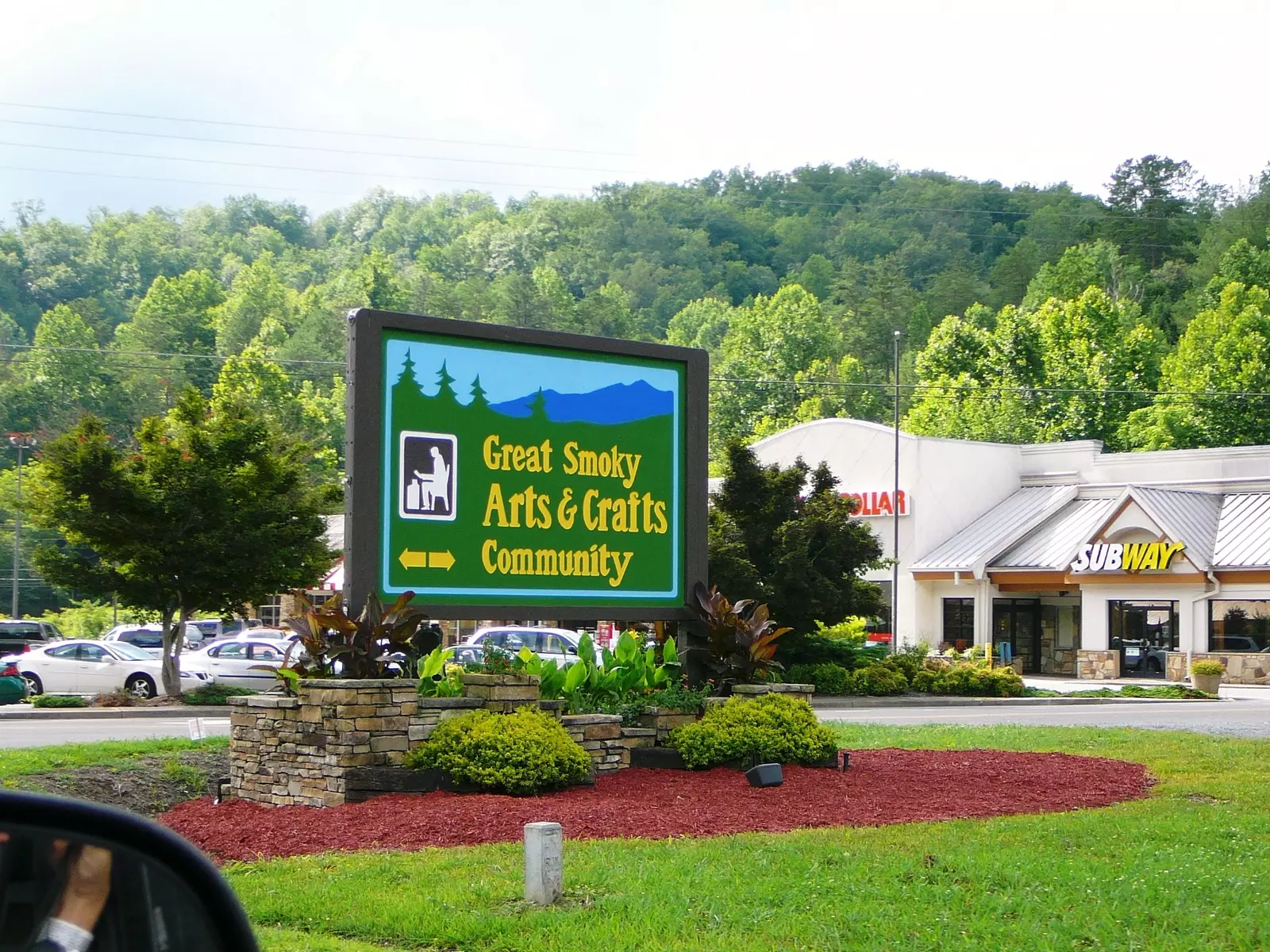Just looking out over the Smokies’ incredible blue vistas inspires a fundamental aesthetic response; the heart and mind want to capture this view and remember it forever. The Smokies’ rich artistic heritage is born from the first isolated settlers’ self-sufficiency. Mountain economy was not based on currency; instead wealth was determined by goods. Bushels of corn, wool sheared from sheep or furniture built from the forests’ trees were the sources of wealth. When time allowed, the utilitarian objects took on a stately elegance, reflecting the beauty of the environment in a weaving pattern on a basket or the carved design of a broom handle.
Cherokee’s Oconaluftee Indian Village and Qualla Arts & Crafts Mutual maintain the rich tradition of Native American crafts, including baskets, pottery and weaving. Appalachian crafts include: cane-bottom chairs, rocking chairs, corn shuck crafts, brooms, quilts and carved wood sculptures.
The Arrowmont School of Arts and Crafts, located in downtown Gatlinburg, helps keep these remarkable crafts alive. Founded in 1912 by the University of Tennessee sorority Pi Beta Phi, Arrowmont served as an elementary school and health-care center. When public schools and medical clinics were established in the area, Arrowmont turned its attention to the preservation of crafts as job training for the rural poor. Today, the campus attracts international visitors who teach and learn traditional Appalachian crafts. The Great Smoky Arts and Crafts Community, located along an 8 mile loop just outside of Gatlinburg, is also home to numerous artisans who work in traditional media. The community is North America’s largest working art colony.
Music also played an important role in the life of early settlers. The dulcimer, a three-stringed instrument shaped like a stretched violin, was developed here by people of Scotch decent to imitate the sound of a bagpipe. The vibrato of a plucked string echoes its droning sound and the dulcimer was much easier to make. Other stringed instruments like guitar and banjo were also popular in the mountains, contributing to many a church service or restful evening spent sitting on the porch. These instruments are the staples of bluegrass, a rollicking folk music style that was centered around the southern Appalachians. Bluegrass heavily influenced the country music of today, which is featured in the area’s multiple music theaters that have sprung up in recent years.
Spend a day discovering the many arts and crafts areas in the Smokies. Gatlinburg’s Arts and Crafts Community on Glades Road and Buckhorn Roads off of Highway 321 in East Gatlinburg is a great place to take your jeep for the day of shopping and lunching. Get to know the locals who own the many small shops and restaurants along the way. This is just an awesome idea for things to do in the Smoky Mountains.











